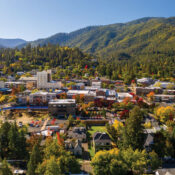
In “Who Stole the American Dream?” in the July/August 2013 issue, Hedrick Smith explores the increasing financial burden that companies in the U.S. have shifted to their employees while inflating company profit margins and, in the process, shouldering the middle class with debt and little if any savings.
These concerns aren’t all that novel to the Post, as we’ve covered class, inflation, the insecurity of retirement, and the growing portion of Americans who see themselves on the unstable side of an ever-increasing wealth gap. You might find that the following stories from our archives from 1934–1952 don’t look all that different from 2013.
Class Split
“The basis and boast of American patriotism is that ours is the greatest democracy in the world, where all men are free and equal, with no division of our people into classes, and instead a happy and homogeneous whole. That, no doubt, was an underlying principle when this republic was formed, and it has worked out through the years until we have now arrived at the point where few men are equal, no man is free, and the division into classes is clearly defined and politically recognized.”
Read more: “A Clear Call to the Center,” January 6, 1934.
The Inflation Ladder
“Today, our struggle to keep decently clean, fed, and warm, is typical of the plight of people who were formerly in the comfortable middle class, but have been forced by inflation down the ladder.”
Read more: “Some of the Nicest People Become Inflation Paupers,” January 29, 1949.
Holes in the Safety Net
“More and more of us, I think, are going to have to work in our retirement. In fact, I prefer that kind of retiring—not a dead stop, but a change of direction. But unless you make plans things can be extremely bleak. Most people are pathetically unprepared for their old age, and the smarter ones are deeply worried. Those I met were far more worried about an old age of financial insecurity than about getting killed by an A bomb.”
Read more: “So You’re Going to Retire,” April 9, 1949.
Middle Class: Happier Days
“More than half of the nation’s families now have a middle-class income—as against a quarter 50 years ago. And with the fullest allowance both for the rise in prices and for the great expansion in needs and demands for new things such as car, radio, or movies, a middle-class income, even after taxes, is still a bigger income than the middle-class income of 1900.”
Read more: “Look What’s Happened to Us!” January 19, 1952.
Become a Saturday Evening Post member and enjoy unlimited access. Subscribe now


